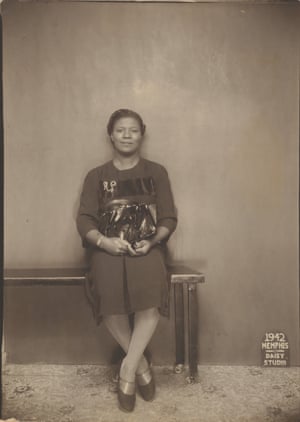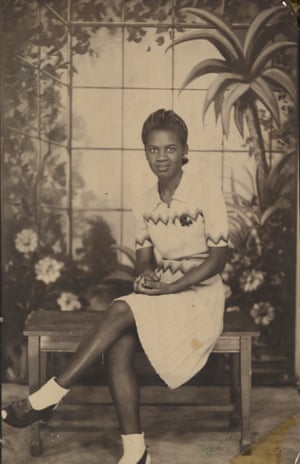In 1861, African American abolitionist Frederick Douglass took the stage at Boston’s Tremont Temple Baptist church and declared: “To the eye and spirit, pictures are just what poetry and music are to the ear and heart.”
It was part of his speech Pictures and Progress, one of the most historic lectures on contemporary photography where Douglass talked about how photography could be a powerful force of positive self-representation to overcome racism during the second world war.
His spellbinding words are the inspiration for the exhibition African American Portraits: Photographs from the 1940s and 1950s, which opens at the Metropolitan Museum of Art in New York City on 26 June.
More than 150 studio portraits from the mid-20th century will offer a rarely seen view of African Americans during the second world war, a time of cultural change, uncertainty and growth of the middle class.
“These photos have a certain quality and beguiling characteristic that separate themselves from the huge population of images we see every day,” said Jeff Rosenheim, the Met’s photography curator. “They tell stories that other stories from the same time do not.”
The exhibition features classic photo portraits of parents with their newborns, or standing proudly in lavish fur coats, suits and ties. Standing before picturesque, painted scenery of forests, many are smiling while wearing their Sunday best, like feathered hats, pearl earrings and leather gloves, or clutching their purses with perfect nail polish.
However, most of the photographers and their subjects featured in this exhibition are unknown, making it an exhibition of anonymous portraits said Rosenheim, who is the author of 10 books on Depression-era photojournalist Walker Evans. He also previously curated the Met’s Photography and the American Civil War exhibition from 2013.

One of the few known studios in the exhibition is Daisy Studio, which was on the historic Beale Street in Memphis, Tennessee. Many of Daisy’s photos (which are marked by the brand’s logo on a wooden slab in the bottom left corner of each photo) show young people in the south taking their portraits before enlisting in the war.
“They’re leaving home for the first time, their future is uncertain,” said Rosenheim. “Without too much fanfare and with economy of means, it makes these pictures just stunning. They allow us to look at a time and a place that changed the country. It’s on the cusp of the civil rights era and there was great stress because of the war, but it was also a time of introspection.”
But the people in the photos are anonymous and there is no real way to trace them, besides the Met’s visitors being able to recognize their loved ones. As most of the photos here show people going off to war in their late teens and early 20s, and having been photographed in the 1940s and 1950s, the subjects could be in their 80s or 90s today.
“We hope that with the public’s attention, we can identify some of the subjects, as most of them are unknown,” said Rosenheim. “People might be able to recognize a family member or a friend and attach a name to these faces.”
These photos build on the museum’s ever-growing photography portraiture collection, which starts with the 1840s and continues to the present. They were acquired by the Met between 2015 and 2017 from the Rose Bowl flea market in Pasadena, California, though many were believed to be photographed in the midwestern and southern cities of Memphis, New Orleans and Kansas.
“The power and meaning of these collections are sites of collective memory,” said Rosenheim. “Most of the people are at the end of a long life right now and the photos are moving around as part of their natural progress.”
It was a tradition to go to photo studios and pose in a new military uniform, either alone or with parents, siblings or loved ones, which would then be printed and mailed to the soldiers and sailors abroad as a memory.

“It was a time people were more thinking about the fragility of life,” said Rosenheim.
Photo studios thrived during Pearl Harbor and during the 1950s, right before mass media culture took over in America. “It’s a sweet spot,” said Rosenheim.
The fashion of the time was utilitarian but stylish. While many posed in military garb, others show women wearing smart A-line dresses with plastic handbags, whimsical brooches, stylish wristwatches and high heels.
It was an act of personal individualism going to a photo studio. “For those individuals who chose to pose for themselves, it was an act of self-expression,” said Rosenheim. “These pictures show that it was a time of transition for these individuals; they are choosing to pose for their own reasons – it’s not because their parents or the military told them to do so.”
Some of the photos are hand-painted with color, whether it’s the background to give the portrait more life, or as makeup, like plump red lip color for the women. Rosenheim explains that studio photographers could make extra money by applying color to photos by hand, which would help increase their revenue.
Just as the population in the south was segregated, so was the military. “There was the civil rights struggle for African Americans, not just voting rights but every other freedom,” said Rosenheim. “In these pictures, we see them in reflection of where they are and what their conditions are.”
- African American Portraits: Photographs from the 1940s and 1950s is on view 26 June through 8 October at the Metropolitan Museum of Art in New York